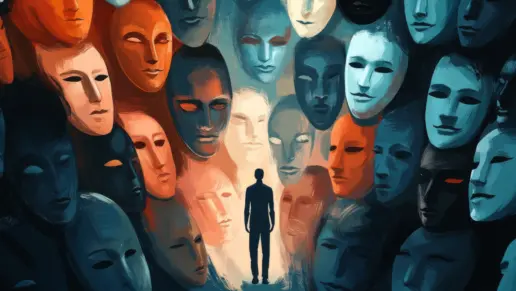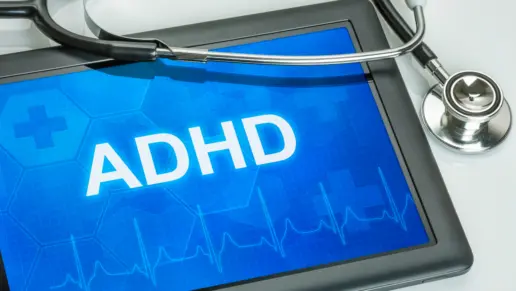Bipolar Disorder and Addiction Treatment: The Imperative of Comprehensive Care
It has been estimated that nearly 40% of adults with substance use disorder (SUD) also have some form of mental illness.1 That means that nearly eight million adults in the United States alone fall into the category of “dual diagnosis” patients, requiring specialized care to simultaneously address the addiction and the co-occurring mental disorder.2
What is Dual Diagnosis Treatment?
As the name implies, “dual diagnosis treatment” refers to the multi-pronged approach used to address both mental illness and substance addiction. Typically, treatment protocols complement one another, as mental illness and addiction are often strongly correlated, the one reinforcing the other.
Indeed, for dual diagnosis patients, the ties linking addiction and mental illness can be deep and devastating. Persons with undiagnosed or improperly treated mental illness often turn to substances to mitigate their symptoms.3 Similarly, those with SUD may develop substance-induced mental illness, including anxiety, depression, and psychosis, as a result of their drug or alcohol abuse.4
Dual diagnosis care is designed to break the vicious cycle of substance misuse and mental illness. Such multifaceted care seeks to ensure that the symptoms of one condition aren’t exacerbated by the treatment of the other. For example, when a patient with co-occurring bipolar disorder and SUD detoxes from alcohol or sedatives, extreme care must be taken to avoid triggering a manic episode. Likewise, if the patient is detoxing from stimulants, then their care plan must include strategies to prevent a major depressive episode.
Ultimately, dual diagnosis care for patients with co-occurring disorders is predicted on the pursuit of whole-person wellness, of healing both the addiction and the mental
disorder. Because co-occurring disorders are often mutually reinforcing, when the symptoms of a mental illness are mitigated, so too are many of the triggers of drug and alcohol misuse. Similarly, when the addiction is addressed, many substance-induced psychiatric symptoms are calmed.
Importantly, while addiction can co-exist with a myriad of mental disorders, research suggests that bipolar disorder is among the most common. It is estimated, for example, that nearly 70% of adults with bipolar disorder also have a co-occurring drug or alcohol addiction.5
Understanding Bipolar Disorder
Once commonly known as manic depression or manic-depressive disorder, bipolar disorder is a common mood disorder that affects more than 2% of the adult population in the US, with more than ¾ of those affected experiencing severe symptoms.6 Of the major mental health disorders, bipolar is among the most prevalent and debilitating, often resulting in significant psychosocial impairment.7
Though there are many subtypes of bipolar disorder, what unites them is the illness’s characteristic fluctuations in mood. While mood swings are a part of life for every human, the mood swings of bipolar disorder are a wholly different beast. They’re rapid and excessive, causing the extreme highs (mania/hypomania) and lows (depression) for which the disorder is named.
A person with bipolar disorder may cycle from mania to major depression in a matter of weeks or even days. In severe cases, panic or depressive episodes may also be accompanied by paranoia, delusions, and psychosis. The resulting emotional volatility and erratic behavior can wreak havoc on the person’s ability to function.
The effects of bipolar disorder can be wide-ranging and severe, including difficulty in maintaining employment; significant interpersonal conflict, including a history of broken relationships within one’s family, and patterns of irrational behavior. Without proper treatment, persons with bipolar disorder may engage in a host of dangerous and self-destructive behaviors, from excessive spending, to promiscuous or risky sexual activity, to compulsive gambling, to extreme risk-taking.
While all bipolar disorder subtypes are characterized by rapid and severe changes in mood, sudden shifts from one emotional pole to the other, there are some significant variations.
The major subtypes of bipolar include:
- Bipolar I: The most common form of the disease, bipolar I also typically features the most severe symptoms. It’s characterized by manic episodes that may include delusions (including paranoiac and/or grandiose beliefs), psychotic breaks, and visual and auditory hallucinations, followed by deep depressive periods. Depending on how symptoms manifest, persons with bipolar I may require hospitalization during a major depressive or manic episode to help them stabilize and prevent self-harm.
- Bipolar II: Persons with bipolar II generally do not experience true “mania,” but rather a less severe form of mania known as hypomania. However, depressive episodes in bipolar II are often as frequent and severe as in bipolar I, if not more so. Depressive episodes in bipolar II tend to last longer than in bipolar I.
- Cyclothymia: This bipolar subtype features shorter and less severe depressive episodes than either bipolar I or II. As with bipolar II, persons with cyclothymia often experience hypomania, with less severe manic symptoms than in bipolar I.
- Rapid-cycling: In persons with rapid-cycling, the shifts from mania/hypomania to depression are more frequent and more rapid. While depressive or manic episodes generally last for weeks or months, in rapid cycling, their duration may be as brief as a few days. The result is an extreme instability of mood that can make it difficult to function. Depressive episodes also tend to be significantly more severe during rapid cycling, and self-destructive behaviors, suicidal ideation, and suicide attempts more common. Rapid cycling is characterized by four or more fluctuations between manic/hypomanic and depressive episodes within a 12 month period.
- Bipolar with mixed episodes: Sometimes, manic and depressive episodes are not so easily or clearly defined. Persons with “mixed” bipolar experience both manic (or hypomanic) and depressive symptoms at the same time. They may, for example, experience the impulsivity of mania with the despair of depression.
Signs of Bipolar Disorder
As with any illness, the signs and symptoms of bipolar can vary from person to person. However, the distinguishing feature of bipolar is emotional instability, frequent and extreme fluctuations between manic/hypomanic highs and depressive lows. To recognize these mood fluctuations, though, it’s important to understand that both depression and mania/hypomania can manifest in surprising ways.
Signs of a depressive episode include:
- Difficulty concentrating and slow or sluggish thinking
- Loss of interest
- Self-isolation
- Sleeping too much or too little
- Eating too much or too little
- Feelings of helplessness, hopelessness, and/or worthlessness
- Self-harm and suicidal ideation
- Irritability and emotional outbursts
- Decline in personal hygiene
- Low energy/extreme fatigue
Signs of a mania/hypomania include:
- Excessive energy and the inability to sleep
- Extreme talkativeness
- Racing thoughts from one topic to another/Flight of ideas
- Delusions (including delusions of grandeur and paranoia)
- Euphoria
- Rage and hostility
- Extreme risk-taking and irrational behavior
- Impulsivity
- Psychosis (i.e. strong false beliefs that indicate a break from reality)
Addiction and Bipolar Disorder
As shown above, a significant majority of persons with bipolar disorder will also experience a co-occurring addiction. And, given the constellation of symptoms associated with bipolar depression and mania, it’s not difficult to understand why.
Those with undiagnosed or poorly managed bipolar often turn to drugs or alcohol to deal with bipolar’s debilitating symptoms.8 Unfortunately, this only results in an exacerbation of bipolar symptoms. Alcohol, opioids, benzodiazepines, and cannabis, for example, are depressants, and are likely only to significantly worsen depressive episodes. Heroin, cocaine, and methamphetamine, on the other hand, are stimulants, and may worsen or trigger manic episodes.
Even those with no known history of bipolar or other mental illnesses may develop such disorders as a result of drug and alcohol misuse.9 This is often attributed to structural and functional changes in the brain induced by chemical exposure, though genetics, environment, and a history of trauma appear to also play a significant role.
Without proper dual diagnosis care, though, the outlook for a person with co-occurring addiction and bipolar disorder is not good. Persons with bipolar tend to have more severe disease, and a significantly higher prevalence of debility, relapse, self-harm, and suicidal ideation.10 In addition, both SUD and bipolar are progressive illnesses, meaning that, without proper treatment, they are likely only to worsen over time.
Treating Addiction and Bipolar
Though the challenges for those experiencing co-occurring addiction and bipolar may be great, however, there is hope. Dual diagnosis care is transforming how co-occurring disorders are understood and addressed.
Dual diagnosis treatments for patients with bipolar and addiction are designed to mitigate bipolar symptoms while supporting sobriety, taking particular care to ensure that treatment modalities do not reinforce or amplify the comorbid disorder. Fortunately, many of the psychotropic medications used to treat bipolar symptoms have a positive impact on addiction recovery, including relieving withdrawal symptoms and reducing cravings.
Importantly, because both addiction disorder and bipolar disorder derive from a constellation of genetic, neurobiological, social, and environmental factors, the most effective treatment strategies for both conditions are integrative. More specifically, both addiction and bipolar appear to respond most effectively to a combination of pharmacological therapy, psychotherapy, and recovery-focused life skills training, including training in coping, trauma resolution, stress management, and self-care.
Addiction recovery programs for dual diagnosis patients typically include:
- Medically supervised detox and clinical stabilization
- Intensive inpatient care
- Standard inpatient care
- Partial hospitalization (PHP) and/or intensive outpatient (IOP) care
- Standard outpatient care
- Sober living and/or transitional support
- Aftercare
Therapies and Treatment Options
The integrative approach for addressing co-occurring bipolar and substance use disorder, as has been seen, combines counseling with pharmaceutical therapy. Within this broad framework, however, a host of evidence-based treatment options exists, enabling the patient’s care team to customize the treatment protocol that best meets their individual needs.
Pharmaceutical therapies for treating bipolar disorder among those in addiction recovery may include:
- Mood stabilizers, including Lithium, which has been shown to be highly effective in reducing the frequency and severity of manic episodes
- Anticonvulsants, which can decrease the severity of depressive episodes
- Antipsychotics, which can reduce or eliminate the delusional thinking and erratic behaviors accompanying mania
- CNS and hormonal therapies to reduce the physical symptoms of bipolar by slowing central nervous system activity and remediating hormonal imbalances.
The pharmacological therapies above are typically most effective when combined with evidence-based psychotherapeutic treatments, including:
- Cognitive behavioral therapy (CBT) to help patients recognize and replace harmful and / or false thought patterns
- Motivational interviewing (MI) to support goal-setting and recovery motivation
- Solution-focused therapy (SFT) to empower patients to actively participate in their own healing and recovery, including support patient-directed problem solving and goal setting
- Trauma therapies: Because both addiction and bipolar may be exacerbated and even triggered, at least in part, by unresolved trauma, evidence-based trauma therapies, including eye movement desensitization and reprocessing (EMDR) can be highly effective.
Resources:
- National Institute on Drug Abuse (2018, Aug. 15). Comorbidity: Substance Use and Other Mental Disorders (infographic).
- Jegede, O., Rhee, T. G., Stefanovics, E. A., Zhou, B., & Rosenheck, R. A. (2022). Rates and correlates of dual diagnosis among adults with psychiatric and substance use disorders in a nationally representative U.S sample – PubMed. Psychiatry Research, 315. https://doi.org/10.1016/j.psychres.2022.114720
- Turner S, Mota N, Bolton J, Sareen J. Self-medication with alcohol or drugs for mood and anxiety disorders: A narrative review of the epidemiological literature. Depress Anxiety. 2018 Sep;35(9):851-860. doi: 10.1002/da.22771. Epub 2018 Jul 12. PMID: 29999576; PMCID: PMC6175215.
- Stankewicz HA, Richards JR, Salen P. Alcohol Related Psychosis. [Updated 2023 Feb 5]. In: StatPearls [Internet]. Treasure Island (FL): StatPearls Publishing; 2023 Jan-. Available from: https://www.ncbi.nlm.nih.gov/books/NBK459134/
- Ostacher MJ, Sachs GS. Update on bipolar disorder and substance abuse: recent findings and treatment strategies. J Clin Psychiatry. 2006 Sep;67(9):e10. doi: 10.4088/jcp.0906e10. PMID: 17081077.
- Merikangas KR, Jin R, He J, et al. Prevalence and Correlates of Bipolar Spectrum Disorder in the World Mental Health Survey Initiative. Arch Gen Psychiatry. 2011;68(3):241–251. doi:10.1001/archgenpsychiatry.2011.12
- Miklowitz, D. J., & Johnson, B. S. L. (2009). Social and Familial Factors in the Course of Bipolar Disorder: Basic Processes and Relevant Interventions. Clinical Psychology: Science and Practice, 16(2), 281–296. https://doi.org/10.1111/j.1468-2850.2009.01166.x
- Turner S, Mota N, Bolton J, Sareen J. Self-medication with alcohol or drugs for mood and anxiety disorders: A narrative review of the epidemiological literature. Depress Anxiety. 2018 Sep;35(9):851-860. doi: 10.1002/da.22771. Epub 2018 Jul 12. PMID: 29999576; PMCID: PMC6175215.
- Stankewicz HA, Richards JR, Salen P. Alcohol Related Psychosis. [Updated 2023 Feb 5]. In: StatPearls [Internet]. Treasure Island (FL): StatPearls Publishing; 2023 Jan-. Available from: https://www.ncbi.nlm.nih.gov/books/NBK459134/
- Cassidy F, Ahearn EP, Carroll BJ. Substance abuse in bipolar disorder. Bipolar Disord. 2001 Aug;3(4):181-8. PMID: 11552957.





